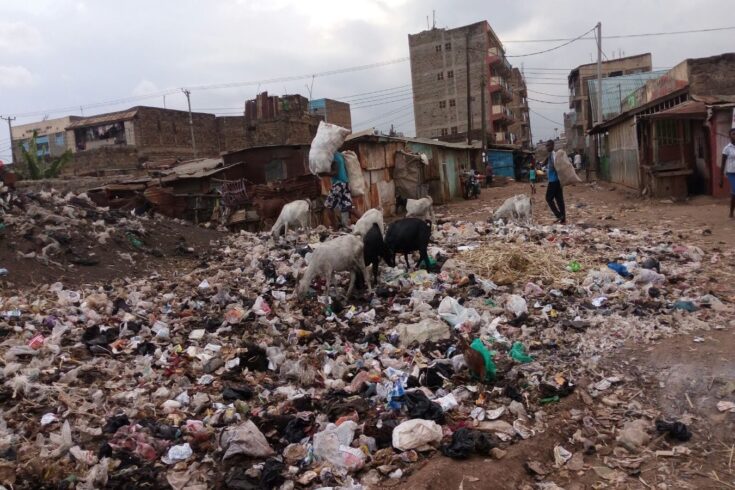The study, done in the fast-growing capital city of Nairobi, Kenya was led by scientists at the University of Liverpool. It shows risk areas tend to be lower income with a lack of adequate sanitation and waste management as well as lower levels of biodiversity.
Findings were based on genetic relationships between Escherichia coli (E. coli) bacteria collected from more than 2,000 people, livestock and urban wildlife from 33 locations across Nairobi.
The study, which was funded by the Medical Research Council (MRC) was conducted from 2013 to 2017. It led by Professor Eric Fèvre, Chair of Veterinary Infectious Diseases at the University of Liverpool and the then PhD student at the University of Liverpool, Dr James Hassell in collaboration with Kenyan partners.
Bacteria transmission
E. coli bacteria have some genes, called mobile genetic elements, that carry traits like drug resistance and can be transferred to other E. coli nearby.
This allowed investigators to infer the same kind of close physical proximity between any E. coli that shared many of the same mobile genetic elements.
Dr James Hassell said:
This genetic similarity is a good proxy for disease transmission potential between two hosts. We can’t know if the bacteria were transferred from human to animal or animal to human, but it tells us something important about the epidemiological connection between them.
In these high population density areas, people and animals are really closely connected from a potential disease transmission standpoint.
These are the places where the ingredients are there for emerging pathogens to jump from animals to humans, and places where it would be easy for those pathogens to multiply before being detected. This means these places are also where it makes sense to prioritise access to healthcare and disease surveillance.
Unplanned urban settings
Comparing the E. coli bacteria collected from people, wildlife and livestock across Nairobi allowed the scientists to map parts of the city that featured the most overlap in these bacterial genes. This ultimately allowed them to identify these areas as key battlefronts for emerging diseases.
Though the results are drawn solely from Nairobi, Kenya the city is emblematic of many cities in the tropics experiencing what researchers describe as rapid, unplanned urbanisation.
When cities grow extremely fast without meaningful urban planning, they are often missing basic infrastructure such as adequate sanitation or waste management systems, especially in low-income neighbourhoods.
The research paper also suggests public health recommendations, including places to prioritise disease surveillance, improve access to basic healthcare and explore targeted disease control measures.
Linking research, communities and policy makers
Dr Anna Kinsey, Head of Programme for Epidemic Preparedness at MRC part of UK Research and Innovation (UKRI), said:
This interesting study, supported by the UKRI Environmental and Social Ecology of Human Infectious Diseases Initiative (ESEI), exemplifies the important insights and impacts that can arise from taking a holistic, interdisciplinary approach to investigate and respond to infectious disease threats.
It also illustrates the value of links to communities and policy makers to do the research and through which the benefits of this knowledge will be felt and demonstrates the importance of such approaches to improve health of people and animals around the world.
UKRI tackling infections
Supporting research into disease outbreak, epidemic preparedness, and tackling infections is a key strategic investment area for UKRI.
UKRI will shortly launch an interdisciplinary funding opportunity supported by all the UK’s research councils to better understand, predict and prevent emergence or re-emergence of infectious human, animal, and plant diseases of epidemic potential.
Further information
To read more about the research led by the University of Liverpool please visit the university website: University research leads way in preventing disease outbreaks in urban areas.
The paper, ‘Epidemiological connectivity between humans and animals across an urban landscape’ is published in Proceedings of the National Academy of Sciences.
Dr Hassell is now a wildlife veterinarian and epidemiologist for the Smithsonian’s National Zoo and Conservation Biology Institute’s Global Health Program.

